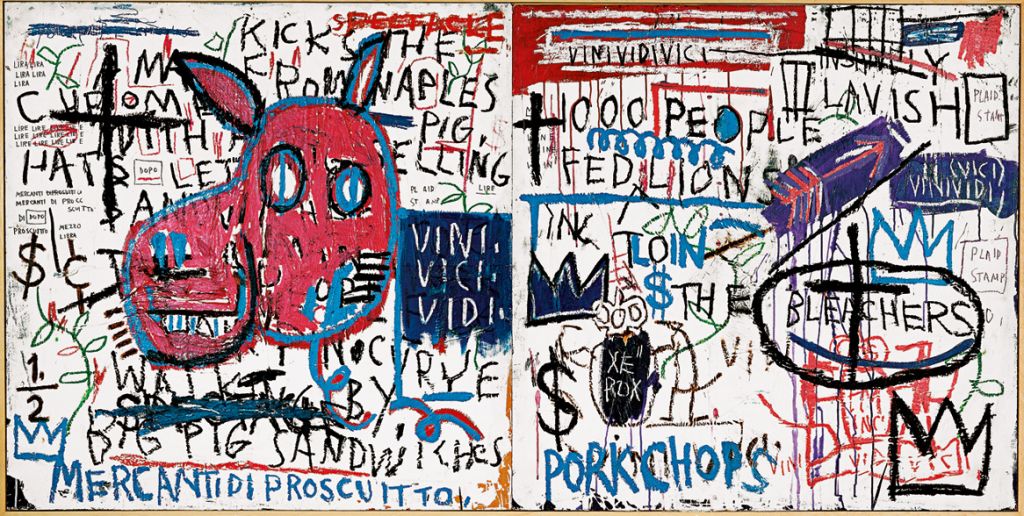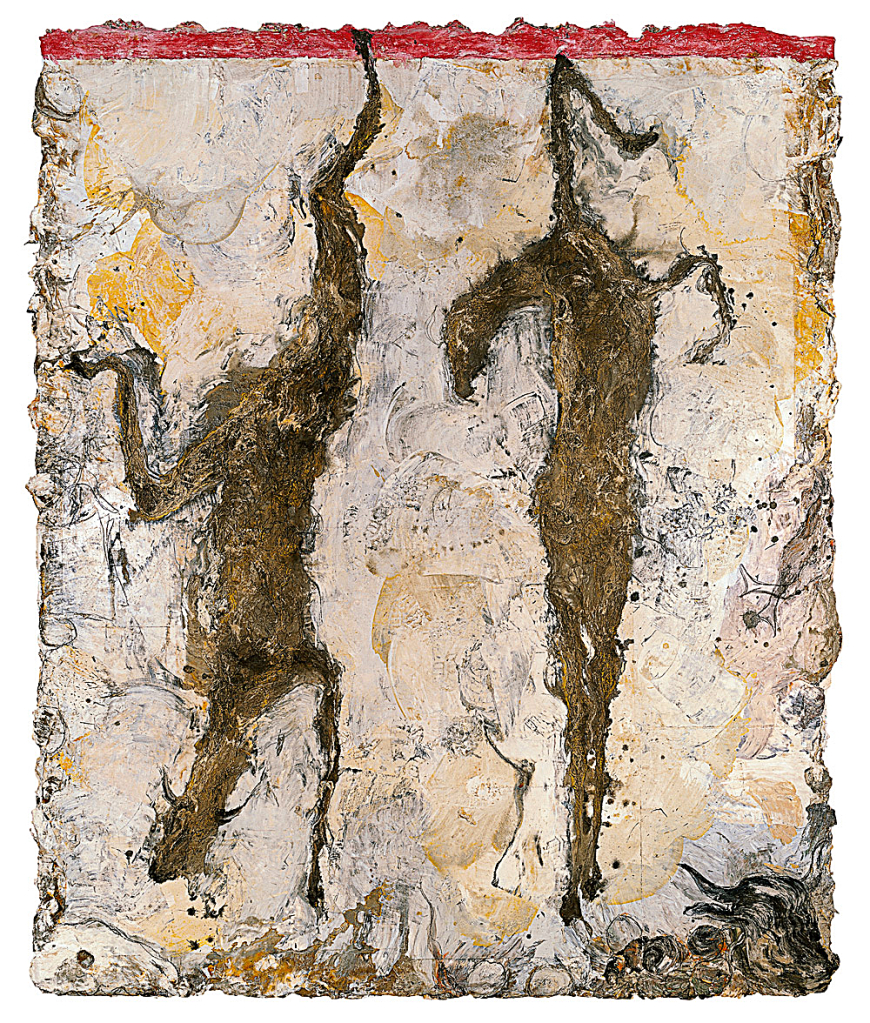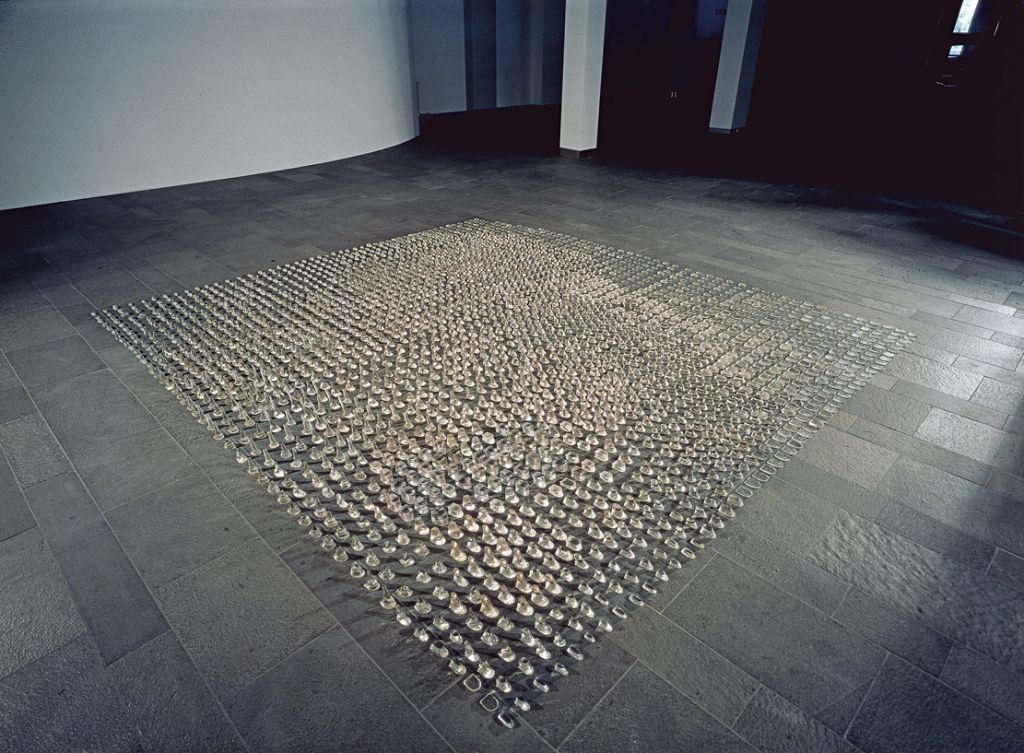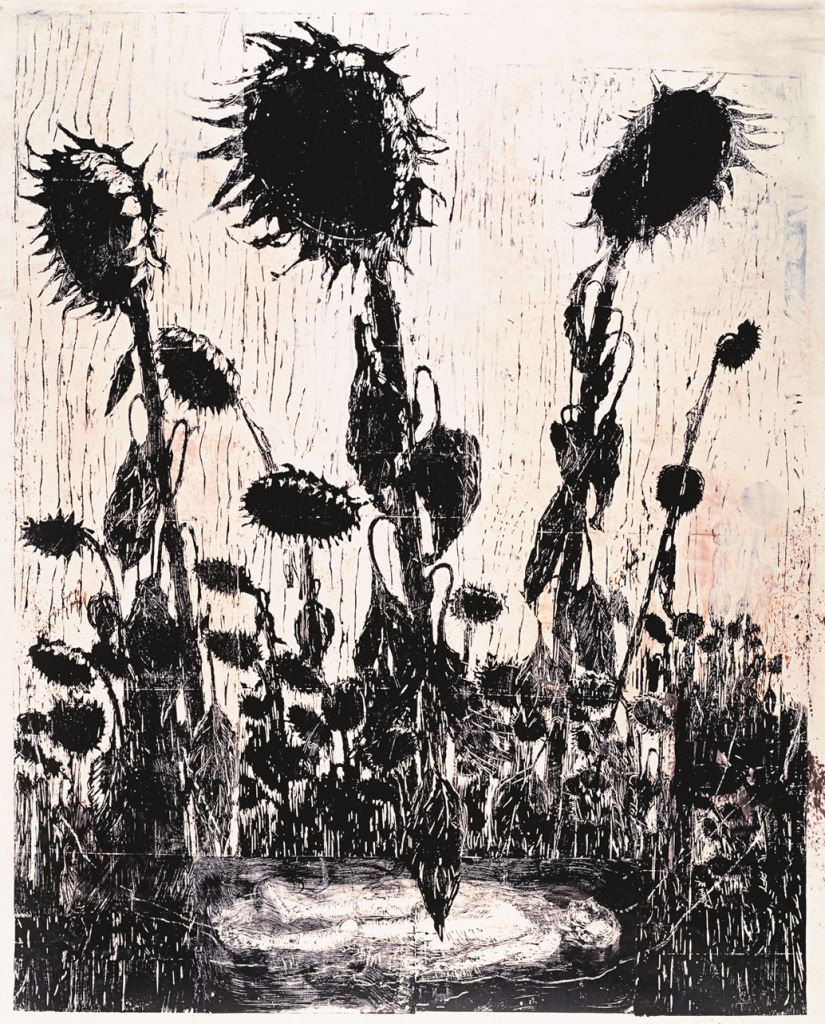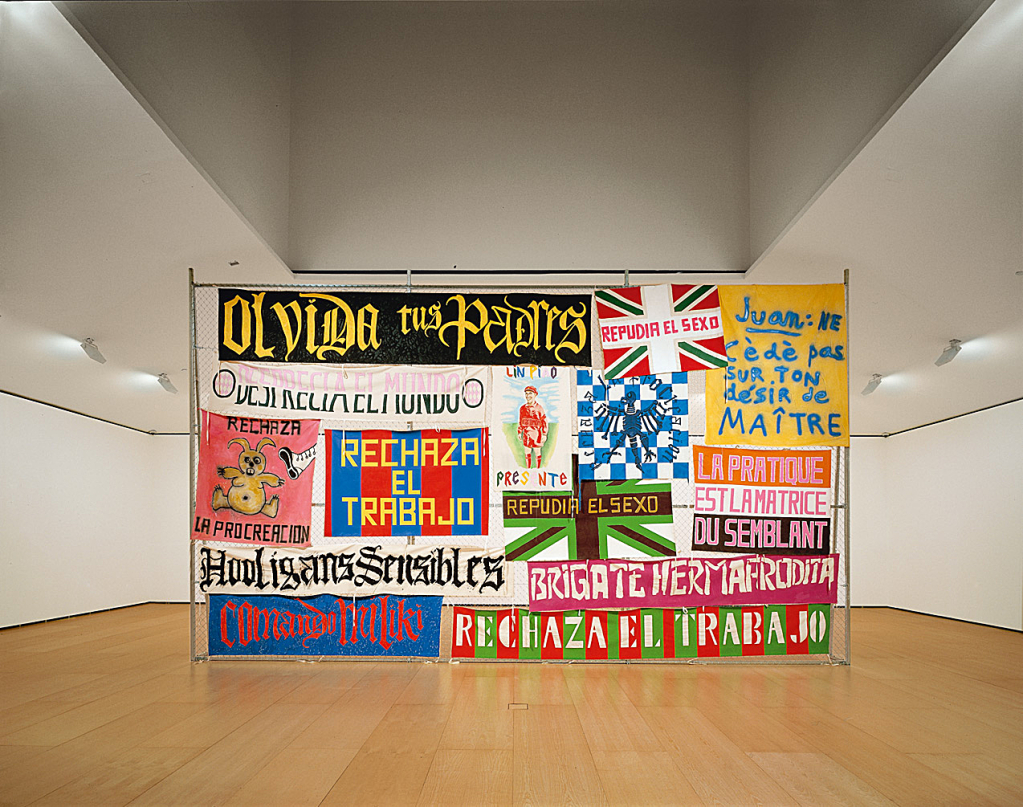How are you going to behave? A kitchen cat speaks
2009Wood, lamps, stuffed cat, text, door blinds, MP3 playerDimensions variable
Borrowing from and reinterpreting Conceptual art and Minimalism, Liam Gillick's work is not confined to a specific form of artistic practice but ranges over his various activities as a critic, writer, designer, curator, filmmaker, professor, and visual artist. All of these diverse undertakings comprise his oeuvre, which is best considered in terms of groups of ideas with multiple layers or facets rather than individual objects.
In 1989 Gillick mounted his first solo exhibition, 84 Diagrams, at Karsten Schubert in London, presenting a series of drawings for buildings in the late Modernist style that were deliberately faulty or unworkable as architecture. Interested in "the ability to work fast and to process ideas rapidly," he used a computer program to generate the renderings at a time when such programs were first becoming accessible to the general user.[1] The following year Gillick began working with artist and writer Henry Bond on a series called Documents. For this project, the artists operated as a news team, working through a British press association and attending news events (press conferences, photography sessions, and so on) as reporters or photographers. The works that resulted-each comprising a framed photograph and text panel, sometimes accompanied by an audio recording-had little to do with journalism, however. Gillick has said: "For me the more interesting idea was to constantly shift between the role of the artist and the person who doesn't need cultural permission to get involved in a discourse that is activated and normally has professionalised borders."[2]
In 1992 Gillick began to write the first scene in a script titled McNamara, later used to create an animated film about a fictitious event. It soon became a "scenario," which the artist describes as "a constantly mutating sequence of possibilities." He continues: "Add a morsel of difference and the results slip out of control, shift the location for action and everything is different. There is a fundamental gap between societies that base their development on scenarios and those that base their development on planning."[3]
This represented a turning point in Gillick's artwork, since for the first time the intent and the result were separate and the outcome of his investigations became generators, instruments, or prototypes of additional ideas. Gillick explains: "This allowed me to get to a situation where the work didn't need to do everything, as it were, where the work could exist on many different levels of significance in relation to certain key ideas and people's approach to the work could come from different directions. It could come through the condensed core of ideas, it could come through the scenarios or the text, or it could come also through the visual, formal relationships that were set up."[4]
In 2008 Gillick was commissioned to represent Germany at the Venice Biennale the following year. The project he presented was titled How are you going to behave? A kitchen cat speaks (2009). A set of colorful plastic strips flew over the front door of the German Pavilion. Inside, a simple modular kitchen made of pine formed a stark contrast to the grandeur of the building. The space represented the Frankfurt kitchen, designed in the mid-1920s by architect and anti-Nazi activist Margarete Schütte-Lihotzky. Some ten thousand units of the Frankfurt kitchen, a forerunner of the modern built-in kitchen, were installed in social housing in Frankfurt in the late 1920s. Gillick's installation featured a stuffed cat that sat on top of one of the cupboards and appeared to speak in the voice of the artist; this allowed Gillick to introduce a narrative element without the suggestion of a supernatural or spiritual presence. He had come up with the idea after sitting for months in his kitchen, an improvised studio, with his son's cat, which would constantly try to distract him. How are you going to behave? A kitchen cat speaks was presented at the Kunst- und Ausstellungshalle der Bundesrepublik Deutschland in Bonn in 2010 and entered the Guggenheim Museum Bilbao Collection the following year.
1. Hans Ulrich Obrist, interview with Liam Gillick, Domus, October 2006, p. 111.
2. Ibid., p. 113.
3. Liam Gillick, , Prevision: Should the Future Help the Past? (Paris: ARC Musée d’Art Moderne de la Ville de Paris, 1998).
4. Obrist, interview with Gillick, p. 117.
Original title
How are you going to behave? A kitchen cat speaks
Date
2009
Medium/Materials
Wood, lamps, stuffed cat, text, door blinds, MP3 player
Dimensions
Dimensions variable
Credit line
Guggenheim Bilbao Museoa Gift of the artist, with generous support from Casey Kaplan Gallery, New York, and Esther Schipper, Berlin

